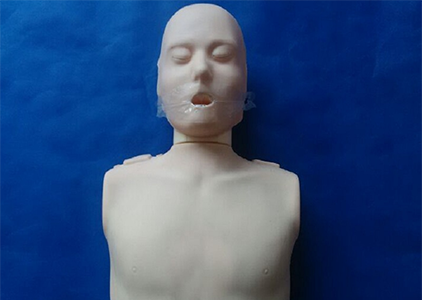
Cardiopulmonary resuscitation (cpr) is an emergency rescue measure primarily used to maintain oxygen supply to the brain and body in the event of cardiac arrest. Here’s a detailed guide on how to perform cardiopulmonary resuscitation correctly:
1. Determine whether cardiopulmonary resuscitation is needed
Before deciding whether to perform cardiopulmonary resuscitation, you must first determine the patient's condition. If the patient is unconscious, not breathing, and has no pulse, it can be judged as cardiac arrest, and cardiopulmonary resuscitation should be performed immediately.
2. Steps of cardiopulmonary resuscitation
a.Chest compression: Place your hands over the lower part of the patient's sternum, straighten your arms, and use the weight of your upper body to press vertically downward. The depth of each compression is 5-6 cm, and the frequency is 100-120 times per minute. During the compression process, ensure that the chest fully rebounds and minimize the interruption time of compression.
b.Artificial respiration: Pinch the patient's nose, then take a deep breath, and blow into the patient's mouth twice, each time blowing for more than 1 second to ensure that the chest rises. When blowing, avoid blowing too much or too fast to avoid causing stomach distension.
Circular breathing: After every 30 compressions, perform 2 artificial respirations, and then continue compressions.
c.Continuous cpr: cpr should be continued until the patient regains spontaneous breathing and pulse, or until professional rescuers arrive.
3. Precautions
a.When performing cpr, minimize the time between compressions and blows to maintain an effective oxygen supply.
B.When performing cardiopulmonary resuscitation, try to keep the patient's airway open and avoid vomitus and respiratory secretions from entering the respiratory tract.
C.When performing cardiopulmonary resuscitation, try to avoid excessive ventilation to avoid complications such as gastric distension and pneumothorax.
D.When performing cardiopulmonary resuscitation, pay attention to the patient's reaction and changes in vital signs, and adjust rescue measures in a timely manner.
In summary, cpr is an emergency rescue measure that needs to be performed as soon as possible in the event of cardiac arrest. Correct chest compressions and artificial respiration can temporarily replace the functions of the heart and lungs, buying precious rescue time for the patient. After mastering cpr skills, review and practice them regularly to maintain proficiency. At the same time, we should also strengthen our awareness of first aid and understand common first aid knowledge and skills so that we can take correct rescue measures in time when encountering an emergency.







Sophie Asveld
February 14, 2019
Email is a crucial channel in any marketing mix, and never has this been truer than for today’s entrepreneur. Curious what to say.
Sophie Asveld
February 14, 2019
Email is a crucial channel in any marketing mix, and never has this been truer than for today’s entrepreneur. Curious what to say.